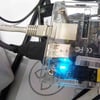If you have ever copied the python virtual environment folder from one location to another and faced problem using it, this article will help you understand how you can solve this problem.
Let us first create a folder, named example and then create a virtual environment and install flask using pip
$ mkdir example
$ cd example
$ python -m venv venv
$ source venv/bin/activate
$ pip install Flask
Now you have a virtual env with flask installed.
After doing this python sets an environment variable VIRTUAL_ENV, let us check its value.
$ echo $VIRTUAL_ENV
/home/username/example/venv
We will now move this venv folder to some other folder.
$ mkdir example2
$ mv venv/ example2/
$ cd example2
$ source venv/bin/activate
Now let us check the value of VIRTUAL_ENV variable
$ echo $VIRTUAL_ENV
/home/username/example/venv
Wow, this is strange. I have moved the folder but still the value of VIRTUAL_ENV variable is the same?
This is because when you create the virtual environment, the location is hardcoded based on current directory.
You can check this inside activate file we have previously used to activate the virtual environment.
You will find something like VIRTUAL_ENV='/home/username/example/venv'.
The solution for using the virtual environment at the new location is simple. Just change this path in all program inside venv/bin directory to the new path :-)
Please don't do it manually!!!
Use tools like sed on unix or similar tools for the same.
Example using sed:
$ old_path='/home/username/example/venv'
$ new_path='/home/username/example/example2/venv'
$ cd venv/bin/
$ sed -i "s|$old_path|$new_path|g" *
The last command is replace in-place the value of old_path with new_path. * signifies all files in current directory(not exactly, but for this example consider it). Make sure you run this command while present in venv/bin folder.
After doing this reactivate the virtual env.
$ source venv/bin/activate
And voila!
Reference:
- For
sedcommand used: https://stackoverflow.com/questions/10309968/sed-search-and-replace-strings-containing






Latest comments (4)
This as awesome!
This is a really handy tip, thank you for sharing!
One slight issue which might be worth flagging though: using the sed command on a virtual env's bin folder will break any sym-links to e.g. the env's Python commands. So these will need to be recreated afterwards.
Yeah, like Maksim I'm not sure I really understand that warning.
If there are any symlinks TO anything in the
$VENV/bin/folder, and they're absolute symlinks, then yes they'll get broken — but it's moving the directory that will break them, not editing paths withsed.Editing paths with
sedis necessary to fix things inside the venv, after moving it. Primarily:VIRTUAL_ENVshell variableentry_pointscripts created in$VENV/bin, which will similarly contain the full path to the symlinkedpython3executable inside that directory.It's true that if there are any external symlinks (I can't fathom why there would be), moving the directory will break those as well, but
sedhas nothing to do with it, and you can't break any symlink by modifying a file's contents withsed.Please could you provide any details for understanding? As I understand, when I replace a wrong old path with a proper new one, then all paths become correct and all files can be found by the new paths. How it could break symlinks?